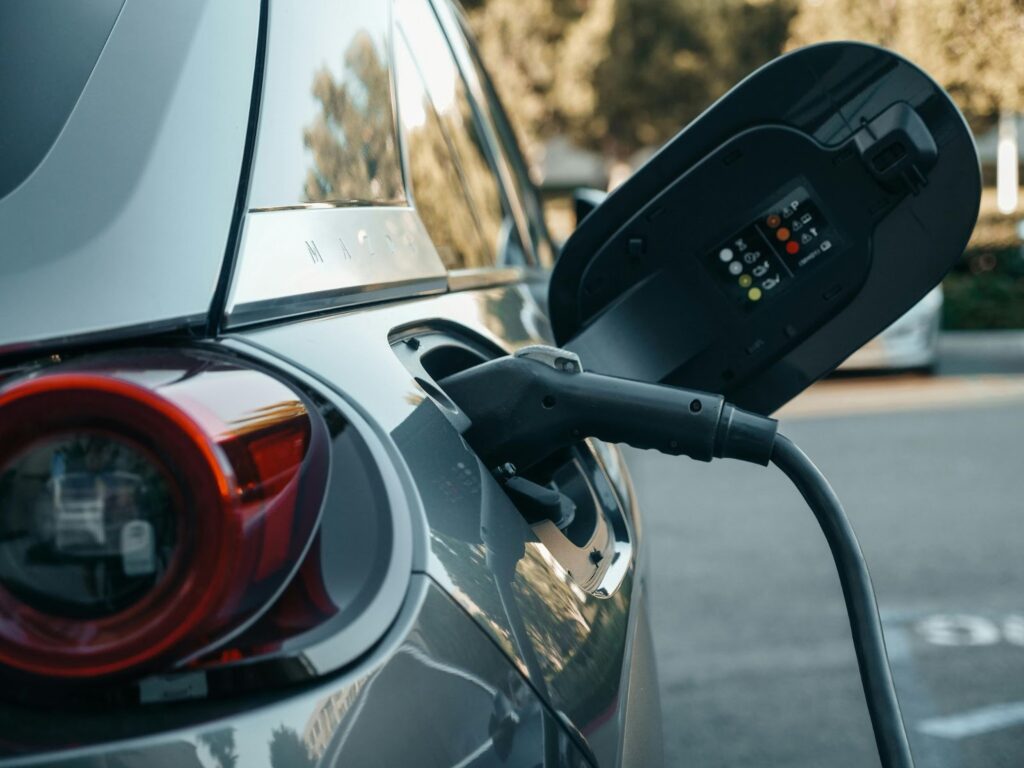
Photo from Pexels.com
As electric vehicles become more popular on our roads, a new environmental concern is emerging. The batteries that power these clean-running vehicles might not be as environmentally friendly as we thought. Recent research shows these lithium-ion batteries contain concerning levels of PFAS, often called “forever chemicals.”
In 2022 alone, global lithium-ion battery production surged by over 65%. This increase was fueled by rising demand for electric vehicles, e-bikes, and consumer electronics, reports the International Energy Agency.
To enhance battery safety and durability, manufacturers are increasingly using per- and poly-fluoroalkyl substances (PFAS). It’s synthetic chemicals that are lauded for their resistance to heat and degradation.
Let us explore why PFAS use in lithium-ion batteries is raising concerns for both human health and the environment.
The Rise of Lithium-Ion Technology
In the past two decades, lithium-ion batteries have become the standard for portable electronics like laptops and smartphones. Li-ion batteries offer high energy density, faster charging, and a longer lifespan, notes the Clean Energy Institute. These batteries are also lightweight, improving power efficiency and reducing emissions.
Car manufacturers, in particular, have switched from traditional lead-acid and nickel-cadmium batteries to lithium-ion batteries. It is because these li-ion batteries can handle higher temperatures without breaking down. This feature helps prevent dangerous overheating in electric vehicles, e-bikes, and e-scooters, highlights a 2023 review paper. However, this advancement comes with a hidden cost to our environment.
The PFAS Connection
PFAS chemicals have been around since the 1950s. Manufacturers love them because they resist heat, grease, oil, and water. Because of these qualities, PFAS are used in many industries, such as food packaging, firefighting foam, and battery manufacturing.
In lithium-ion batteries, a type of PFAS called bis-FASIs helps prevent overheating by forming a stable barrier. This protective layer keeps the battery’s internal parts from breaking down in extreme heat, explains The Guardian. It reduces the chance of thermal runaway, which is a dangerous reaction that can cause overheating, fires, or even explosions.
New Research Raises Red Flags
Dr. Jennifer Guelfo and her research team at Texas Tech University recently studied how PFAS from lithium-ion batteries affects our environment. They looked at soil and water samples from 87 different places in the United States and Europe.
Their findings, published in Nature in July 2024, paint a worrying picture. The highest PFAS levels were found near Li-ion battery manufacturing plants. In Minnesota, near a 3M facility in Cottage Grove, alarming levels of chemicals were found in the soil and water. Similar problems showed up in Kentucky and North Carolina. The situation isn’t better in Europe – areas near factories in Belgium and France showed high PFAS contamination.
Researchers warn that PFAS levels will continue to rise without changes in battery production and disposal. This will eventually impact our soil, groundwater, surface water, and landfills. What makes this situation more concerning is that no country currently regulates the specific types of PFAS used in batteries. Moreover, this lack of oversight means manufacturers have hardly any legal pressure to find safer alternatives.
The Terrifying Effects of PFAS Exposure
The health implications of PFAS contamination are significant, reports TruLaw. Aqueous Film-Forming Foam (AFFF), a firefighting foam used at military installations and airports, is identified as a source of PFAS chemicals. In communities near these facilities and other industrial zones, drinking water has been significantly contaminated. As a result, companies like 3M, DuPont, and Tyco Fire Products are now facing numerous lawsuits from affected individuals and communities.
Studies have linked PFAS exposure to serious health conditions, including testicular and kidney cancers, thyroid disease, and ulcerative colitis. The mechanism behind these effects lies in PFAS’s ability to accumulate in the human body over time. Even at low exposure levels, PFAS chemicals can disrupt biological processes, leading to inflammation and immune system impacts.
First responders and military personnel who regularly handled AFFF have filed lawsuits citing major health complications. Residents exposed to contaminated water have also joined legal actions against PFAS manufacturers.
These legal battles have resulted in diverse AFFF lawsuit settlement amounts, reflecting a growing acknowledgment of the manufacturers’ responsibilities. Recent settlements demonstrate an improvement in addressing the health and environmental consequences of PFAS exposure. However, as it emerges that lithium-ion batteries contribute to PFAS spread, new concerns complicate the existing issue further.
Beyond Environmental Concerns
The hazards of lithium-ion batteries extend beyond PFAS contamination. These batteries are also known for their propensity to overheat and, in some cases, catch fire. Lithium-ion battery fires triggered 200 reports to the U.S. Consumer Product Safety Commission (CPSC) in 2022. These battery-related incidents occurred mostly in urban settings, with New York City reporting numerous cases.
In response, the CPSC issued warnings in December 2022 to manufacturers of e-scooters and other e-mobility devices. It was regarding an immediate urge to them to adhere to UL safety standards. However, PFAS contamination from these batteries demands immediate regulatory action and the development of safer energy alternatives.
FAQs
How do PFAS in lithium-ion batteries affect human health?
The production, disposal, and recycling of lithium-ion batteries can release PFAS into the environment. Exposure to PFAS is linked to severe health conditions, including certain cancers and thyroid disorders. Their accumulation in the body over time can also disrupt various biological systems.
Are there any current regulations on PFAS in lithium-ion batteries?
Currently, there are no global regulations specifically targeting PFAS use in lithium-ion batteries. This regulatory gap means manufacturers have little legal incentive to reduce PFAS use. However, the Environmental Protection Agency evaluates new substances, including those used in batteries, for potential risks before they enter the market.
What are the available safer alternatives to PFAS for use in battery manufacturing?
Research is ongoing to identify PFAS alternatives that offer similar heat resistance without environmental risks. One notable development is the use of polyaryletherketone polymers, including PEEK, which are known for their mechanical strength, and high-temperature durability. Additionally, Dragonfly Energy has made strides in producing lithium-ion batteries without PFAS. They have developed a proprietary dry electrode manufacturing process.
The growth of electric vehicles represents progress in fighting climate change. However, we must address the PFAS problem in lithium-ion batteries before it becomes a larger environmental crisis. By understanding these challenges now, we can make electric vehicles better for both our air quality and our overall environment.





